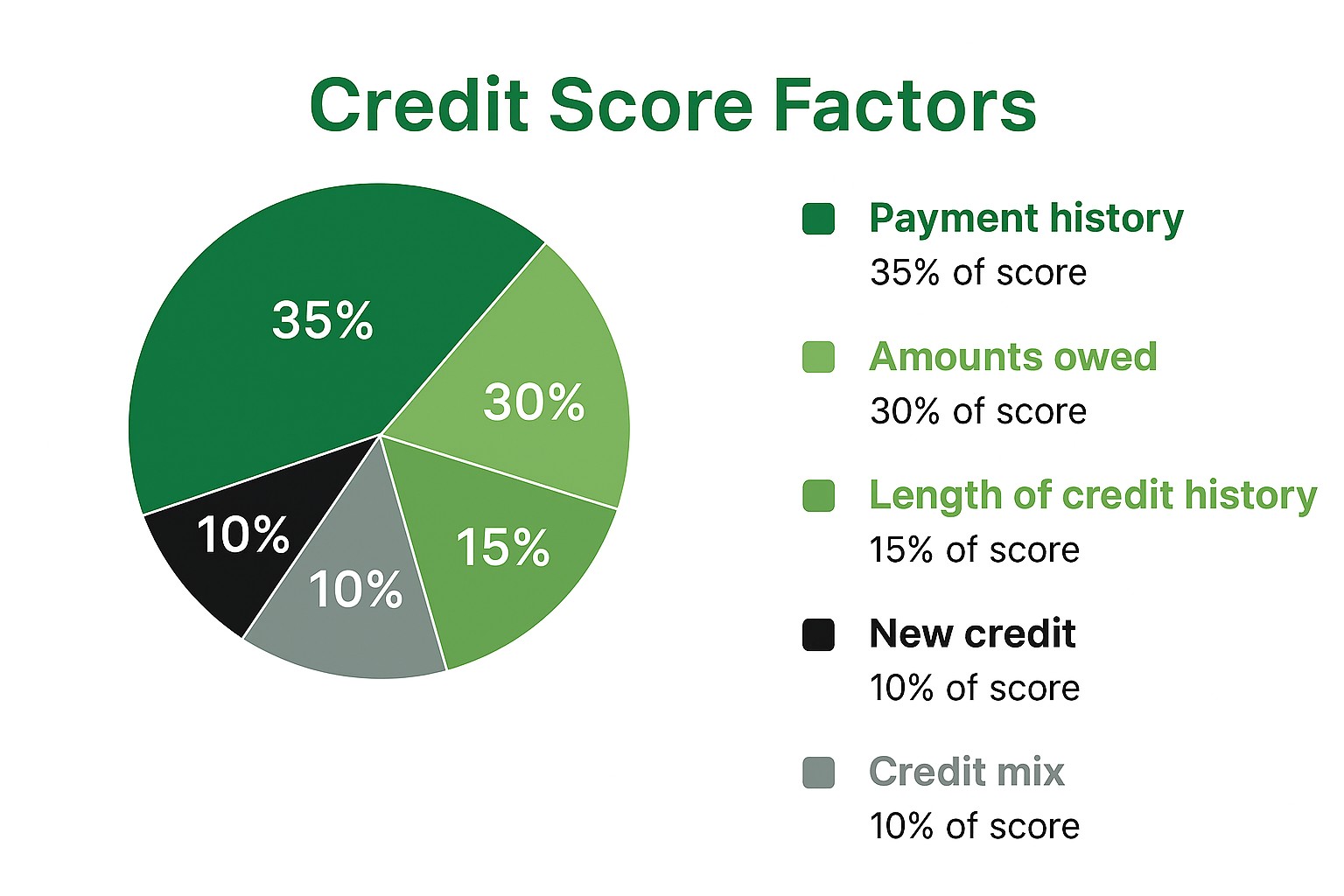How many credit cards should I have? In short, for most people, two or three cards are ideal to generally provide enough flexibility and maintain a healthy credit profile, without becoming overly complex. Of course, like most things related to personal finance, the perfect number depends on your spending habits, financial situation, and goals.
According to Experian, the average American consumer has 3.7 credit cards. On the other hand, PubMed Central quoted U.S. Credit Card Statistics, saying that 14% of people have at least 10 cards. However, I was unable to substantiate the citation it used.
Either way, there are a lot of thoughts on the subject, with a wide range between high and low numbers. Here’s what to consider when determining your ideal number.
Key Takeaways
|
Why the Question Matters
When you think about how many credit cards you should have, what you’re really asking yourself is how your credit card accounts and your debt affect your credit report and scores. Then, with that information, determine what strategy is best in terms of card quantity. For instance:
- The total number of cards and their credit limits influence your credit utilization ratio. A lower ratio is better, meaning the more cards you have, the more room you have between your spending and your credit limit. A high ratio, above 30% will start to negatively impact your score.
- The number of active accounts, the age of each, and how often you’re applying for new cards all contribute to your credit history, which influences your overall credit score.
- If your spending habits lead to carrying credit card debt, that debt and how you manage it appear on your credit report and can signal risk to card issuers.
- Adding multiple credit cards in a short period of time will generate multiple hard inquiries and new accounts, which reduces your average credit age and increases your inquiry count, both of which will temporarily lower your credit score. In other words, if you are going to add cards to your portfolio, add them slowly.
So the number of cards you have, or wish to obtain, is just one consideration. How you use those cards, and whether adding more makes sense, depends on your overall credit profile.

How Many Credit Cards Should I Have for Good Credit?
The “good” FICO credit score range is from 670 to 739. Good credit means having a solid, long-term credit history that appears as low risk in the eyes of lenders. Good credit typically allows you to qualify for rewards-oriented cards and many of the best balance transfer cards. Here’s how credit cards can fit into a plan for obtaining a good credit score:
Minimum: One Card
If you’re just starting out, one card can be enough. Using it responsibly will help boost your credit score until you qualify for a better card.
- Use it for regular spending that you can pay off in full each month to avoid creating debt.
- Keep the balance low. Pay off the balance or stop using it for the month if the amount you owe closes in on 30% of the card’s limit.
- Make every payment on time. Late and missed payments will quickly and significantly reduce your credit score.
- Let the account age. The longer you keep the card, the longer your average credit history will be, which is good for your score.
Ideal: Two to Three Cards
For many consumers, having two or three cards is the best approach:
- One card for everyday spending. This helps you monitor spending and perhaps score some rewards points along the way.
- A second card for rewards or specific categories, such as travel, fuel, groceries, or others. This card can help you track spending in certain areas, which works well for maintaining a budget.
- A third as a backup or for special circumstances. You can often set this one aside and use it if something happens to one of your other cards, or use it sparingly for special purchases that you wish to keep separate from your daily budget.
Why the Strategy Works
- You’ll have multiple credit card accounts, which will increase your total available credit and lower your overall utilization if you keep balances low.
- You’ll build a credit history that includes a greater number of accounts.
- Having multiple cards for different uses can help with budgeting and tracking your spending, as well as taking advantage of various rewards.
Maybe: More Than Three
If you’re disciplined, have a stable financial situation, and can manage multiple due dates each month, having more than three cards can make sense. But caution is necessary:
- Every extra card means another due date and more data to monitor. If this leads to missed payments, your payment history will suffer.
- Opening several new cards in a short time lowers your average account age and signals new credit risk, which can negatively affect your credit score.
- Unless each card adds meaningful benefits, the extra complexity may not be worth it.
- If you plan to apply for a major loan, such as a mortgage or an automobile loan, soon, limit the number of cards you apply for beforehand. Each hard credit inquiry stays on your report for two years, and having too many can disqualify you from many lenders.
However…
If you have a limited number of other types of debt in your credit profile, such as a mortgage, secured debt, or a personal loan, adding a fourth or fifth card can slightly help you score simply by adding more credit accounts to your report and lowering your credit utilization ratio.
| Just Starting to Build Credit | Have Established Credit | Pursuing a Credit-Score Related Goal |
| 1 card | 2-3 cards | 3+ cards |
Factors That Should Influence Your Decision
There are several factors to consider when deciding how many credit cards you should have.
- Financial situation: Before getting any credit cards, ensure you can pay off any balances each month.
- Spending habits: If having credit available to you sounds like the same as having plenty of spending money, limit the number of cards you keep to avoid going into uncontrolled debt.
- Credit mix: Credit cards are just one type of account that factors into your credit profile. If a personal loan makes more sense than a new credit card, adding a new kind of account can help you score in the long run.
- Ability to manage multiple credit cards: If you miss payment due dates because you have too much to keep track of, consider limiting your card count.
- Current credit card accounts and history: How many cards you already have, how old they are, how much available credit they provide, and how you’ve managed them all matter in your decision-making process.
- Impact of applying for multiple credit cards: Every time you apply for a new card, a hard inquiry will appear on your credit report and impact your credit score temporarily. Also, opening new accounts reduces the average age of your credit accounts.
- Credit goals: Depending on your current credit score and history, weigh the pros and cons of adding new accounts or closing old ones.
Pros & Cons of Having Multiple Credit Cards
Pros
- Having multiple cards gives you more available credit, which helps lower your credit utilization ratio.
- You can choose cards to match your spending habits, such as having one for groceries, one for travel rewards, and one for monthly bills.
- You’ll have a backup card in case your primary card becomes lost, stolen, or otherwise undesirable.
Cons
- More accounts to manage and more risk of missing payments. Missed payments significantly hurt your payment history and score.
- Opening multiple cards may cause a drop in your credit score due to inquiries and lower average account age.
- If you carry balances on multiple cards, the amount you pay in interest can increase dramatically.
What If I Already Have Too Many Credit Cards?
If you decide you already have too many credit cards, it’s wise to think carefully before closing any accounts. Canceling credit cards can affect your credit score in a few ways and are worth considering before taking action.
How Closing a Card Impacts Your Credit
- Credit utilization ratio may increase: When you close a credit card, you lose that card’s available credit limit. If you still carry balances on other cards, your overall utilization ratio will rise, which can have a negative impact on your score. For example, if you have $10,000 in total limits and close a $3,000 card, your available credit drops to $7,000, which instantly raises your utilization percentage.
- Your average age of accounts may drop: Length of credit history is a significant factor in most scoring models. Having older accounts helps your score, so closing an old card shortens your average account age and may affect your credit scores slightly.
- Credit mix and history may change: Having a mix of different credit types benefits your score. While closing one of many cards won’t hurt that mix, closing several might have an effect.
| When Closing a Card Might Be a Good Idea | When Leaving a Card Open Is a Better Move |
| The card carries a high annual fee that outweighs its benefits. | The card is old and doesn’t have fees. Keeping it open maintains your credit limit. |
| You’re tempted to overspend, or it contributes to ongoing credit card debt. | You’ve had it for a long time, and closing it could significantly lower your average account age. |
| You have multiple cards and want to simplify your budget and spending tracking. | You can use it sparingly to keep the account open and active. |
How to Close a Credit Card Account Safely
Closing a card isn’t always a bad idea, but it should be a strategic decision. If the card is old, doesn’t have associated fees, and is in good standing, it often helps to keep it open and simply avoid using it much. If keeping it is costly, you’re unwilling to use it, or it tempts you to overspend, closing it carefully can improve your situation, despite the potential credit score dip.
- Pay off any remaining balance or transfer it to another account with a lower interest rate, such as a top balance transfer card.
- Redeem rewards or points before canceling. You’ll lose them once the account closes.
- Contact your credit card issuer directly by phone or secure message to request closure and ask for written confirmation.
- Check your credit report after 30 to 60 days to confirm the account shows “closed by consumer.”
- Continue to monitor your credit utilization. If it increases, pay down other balances to offset the change, or consider a personal loan, debt consolidation loan, or HELOC, as options.

